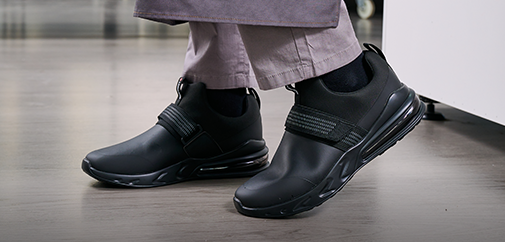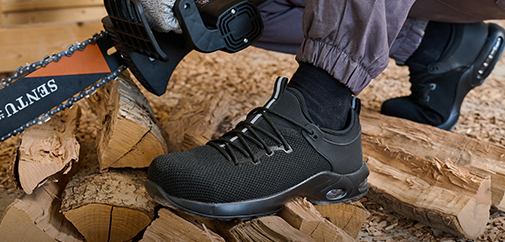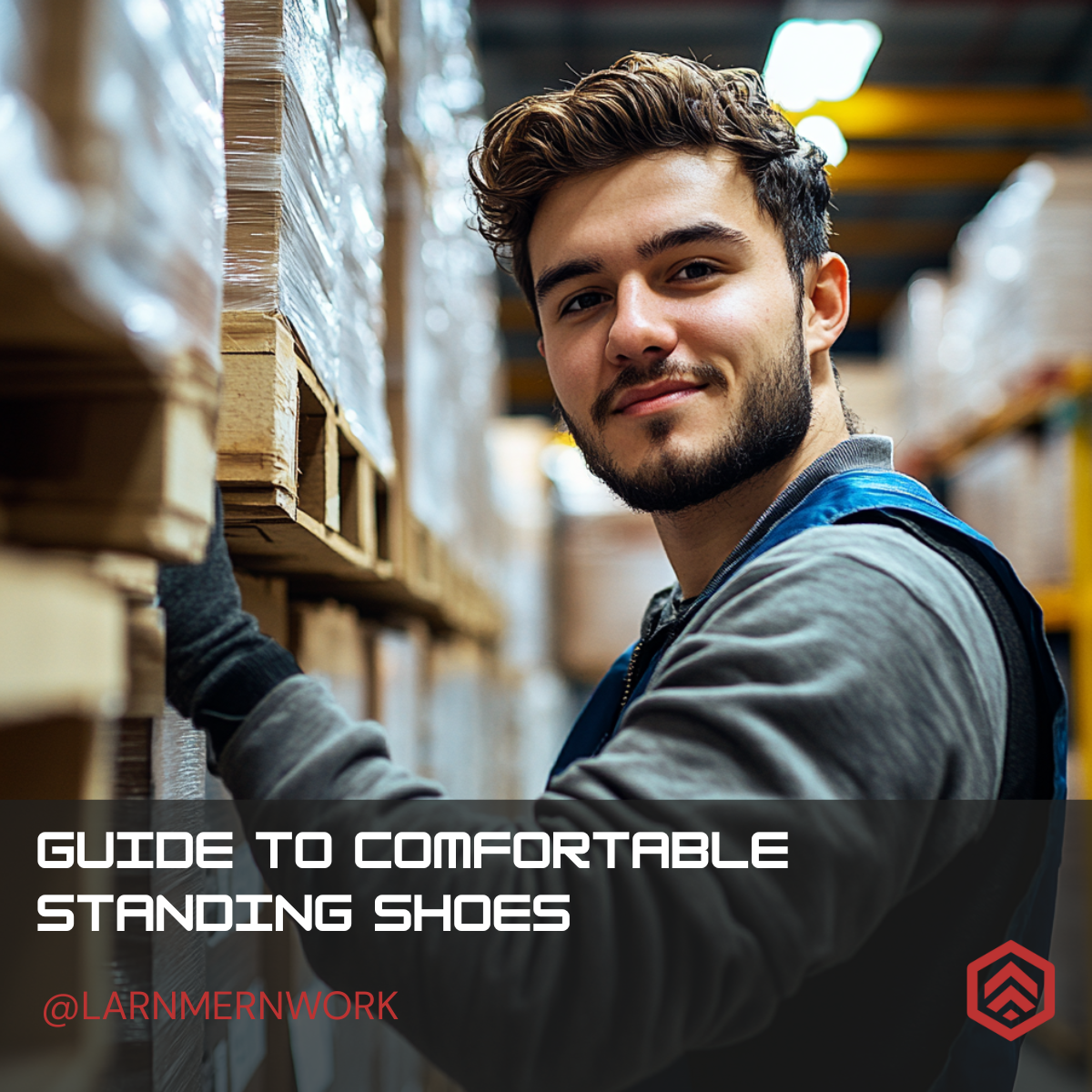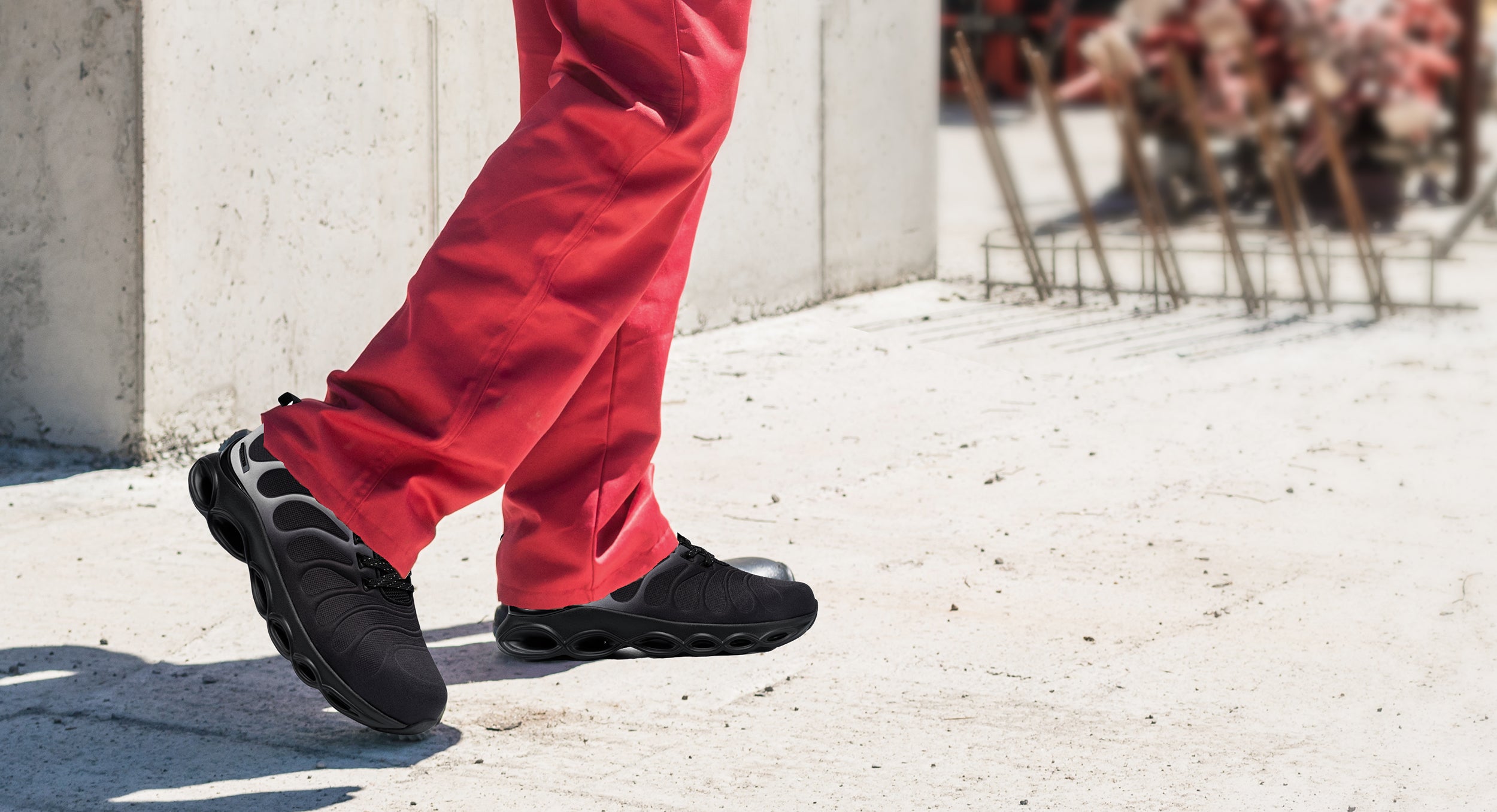
Standing all day in a kitchen can leave your feet sore and swollen. Many chefs struggle with foot pain because of bad shoes, hard floors, and long hours. This blog will share simple tips to ease the strain and keep your feet strong.
Keep reading—you'll thank yourself later!
Key Takeaways
- Wear supportive, non-slip shoes to prevent foot pain and avoid slips. Proper footwear improves comfort and circulation.
- Use anti-fatigue mats with memory foam or gel to reduce pressure on feet during long shifts.
- Take regular breaks to rest your feet, stretch muscles, and elevate legs for better blood flow. Combine rest with hydration to prevent swelling.
- Compression socks improve leg circulation and reduce fatigue during kitchen work.
- Pay attention to early signs of foot pain like soreness or redness and consult a specialist if pain worsens to avoid serious health issues like osteoarthritis or neuropathy.
Wear Supportive and Non-Slip Shoes

Long hours in the kitchen can wreak havoc on your feet. Supportive shoes with proper arch support help prevent foot problems like plantar fasciitis and sore feet. Alexander recommends waterproof work boots for comfort and safety during spills.
Avoid flip-flops, which offer no grip or support. Shoes like Air Cushion or sneakers provide cushioning to reduce heel pain and stress fractures.
Make sure your shoes fit well and have non-slip soles to prevent twisted ankles or falls while working. Your choice of footwear can impact both comfort and circulation over time!
Invest in Anti-Fatigue Mats

Standing on hard floors for hours strains your feet, knees, and back. Anti-fatigue mats ease this pressure by offering spongy support. The Anti Fatigue Mat, with its 9/10" thick memory foam design, is a great option.
It reduces soreness and improves comfort during long shifts.
Kitchen workers often prefer gel mats. Pegeen recommends these for extended standing periods. BoulderGalinTokyo found them excellent for hardwood floors too. Consider getting one from stores like Costco—MrsLarkin swears by their quality mats.
These simple additions protect your body while working tirelessly in the kitchen!
Take Regular Breaks to Rest Your Feet
Working in a kitchen keeps you on your feet for hours. Taking breaks often can save your feet from pain and swelling.
- Sit whenever possible, like ChefJune suggested. Even a few minutes off your feet helps reduce stress.
- Pause every two hours to rest. This gives muscles time to recover.
- Elevate your legs during breaks for 10–15 minutes to improve circulation and ease leg swelling.
- Stay seated while doing tasks that do not require standing, such as checking orders or planning menus.
- Stretch out your legs and big toe during rests to release tension in the foot muscles.
- Use ibuprofen or topical analgesic if you feel inflammation starting after long shifts.
- Combine breaks with sipping water to fight dehydration, which can worsen symptoms like swelling or fatigue.
Practice Proper Posture While Standing

Standing for long hours in the kitchen is tough on your body. Keep your feet shoulder-width apart to stay balanced. Spread your weight evenly between both legs. This prevents pressure from building up in one area.
Focus on something above eye level to straighten your back naturally. Avoid hunching or leaning forward too much—it strains your neck and back. Good posture reduces aches, improves blood flow, and protects against nerve damage and inflamed joints like bunions or hallux issues over time.
Take care of those hardworking feet!
Stretch and Exercise Your Feet Daily
Keeping good posture is key, but your feet also need regular care. Stretching and exercising can prevent pain and stiffness.
- Perform foot exercises like Toe Raise, Point, and Curl at least three times weekly. These strengthen your foot muscles and improve flexibility.
- Try Marble Pickup by using your toes to lift small objects from the floor. This boosts grip strength in your toes.
- Stretch your arches by rolling a frozen water bottle under each foot for five minutes. It reduces swelling and soothes sore spots.
- Stand on tiptoes for 10 seconds, then lower down slowly. Repeat 10–15 times to build spongy tissue strength in your feet.
- Flex and extend each ankle while seated to improve blood flow through veins. This can help reduce the risk of deep vein thrombosis.
- Massage tired heels with your hands after a long shift to relieve pressure from walking barefoot or standing in non-supportive shoes all day.
- Check with a podiatrist, especially if dealing with conditions like psoriatic arthritis or gout, before starting new routines to avoid worsening pain or injury risks.
Use Compression Socks for Better Circulation
Tired feet need extra help after long hours standing. Compression socks improve blood flow, reducing swelling and fatigue. For kitchen workers, they offer support and comfort during demanding shifts.
Choose the right pair based on compression levels. Compression Socks provide 20 to 30 mm Hg pressure, while Dr. Segals Energy Socks give a lighter 15 to 20 mm Hg option.
Doctors often recommend them for better leg health without needing medications or prescriptions.
“Compression socks are a simple way to keep your legs energized all day.” – A trusted D.P.M expert
Maintain a Clean and Dry Floor
Prevent slips and trips by keeping the kitchen floor clean and dry. Spilled water or grease creates hazards, leading to falls or injuries like a broken bone. Dirty floors also grow bacteria, increasing health risks such as infections or breathing issues.
Sweep debris often and mop spills immediately. Use mats near sinks to absorb water quickly. Avoid walking with bare feet on wet surfaces—they create further messes and risk slipping.
Keeping floors dry protects your physical health while reducing accidents in busy kitchen workspaces.
Stay Hydrated to Prevent Swelling
Drink plenty of water during your shifts. Staying hydrated reduces fluid retention and helps prevent swelling in your feet. Avoid alcohol and caffeinated drinks because they can dehydrate you.
High salt intake also causes swelling, so cut back on sodium-rich foods.
Kitchen work is exhausting, but hydration keeps you going. Carry a refillable bottle to sip water throughout the day. This simple habit eases discomfort and boosts circulation in your feet.
Healthy eating, like following a DASH diet, supports better foot care too—less swelling means happier feet!
Recognize Early Signs of Foot Pain
Foot pain can creep up fast during long hours in the kitchen. Watch for early signs like soreness, swelling, or redness. Persistent heel pain might mean plantar fasciitis—a common condition from standing too long.
Tingling or numbness could point to neuropathy, which affects about 50% of people with diabetes.
Ignoring foot pain risks bigger problems like osteoarthritis or even gout caused by urate crystals. Use shoe inserts or orthotics if you feel strain in your arches. Don’t wait—early action stops small issues from becoming serious injuries.
Healthy feet are the foundation of a healthy career.
Consult a Specialist if Pain Persists
Ongoing foot pain can signal deeper health issues. Conditions like rheumatoid arthritis or lyme disease may affect your feet. A podiatric specialist, such as a D.P.M., can assess your condition and recommend care options.
Treatments could include nonsteroidal anti-inflammatory drugs (NSAIDs) like naproxen or colchicine. Some cases might need compression stockings for circulation or custom insoles for support.
Don't ignore the pain—it should not get worse without help! Consult early to protect your health and stay active in the kitchen.
Conclusion
Taking care of your feet is key in kitchen work. Small changes, like better shoes and anti-fatigue mats, make a big difference. Listen to your body, rest when needed, and stay proactive with foot health.
Healthy feet support long shifts—and a long career! Make these tips part of your routine today.
FAQs
1. Why are flip flops bad for kitchen work?
Flip flops provide little support and can increase the risk of injury or strain when standing for long hours in the kitchen.
2. Can poor foot care lead to serious health issues like a pulmonary embolism?
Yes, neglecting foot health during prolonged standing may contribute to circulation problems, which can raise the risk of conditions like a pulmonary embolism.
3. Are there medications, like Humira, that help with foot pain caused by kitchen work?
Humira is prescribed for specific inflammatory conditions but should not be used without a prescription from your doctor.
4. Where can I find more tips on saving my feet while working in kitchens?
Websites such as aarp.org offer helpful advice about maintaining overall health and preventing discomfort during physically demanding tasks.
References
-
https://2peasrefugees.boards.net/thread/135728/anti-fatigue-kitchen-mats-help (2022-12-10)
- https://mstrust.org.uk/a-z/understanding-and-improving-your-posture/tips-how-optimise-your-posture-standing-and-walking (2023-12-20)
- https://www.healthpartners.com/blog/stop-foot-pain-seven-easy-exercises/
- https://www.nytimes.com/wirecutter/reviews/best-compression-socks/
- https://www.health.harvard.edu/staying-healthy/could-you-benefit-from-wearing-compression-socks
- https://www.healthline.com/health/home-remedies-for-swollen-feet
- https://www.lispine.com/blog/7-ways-to-care-for-your-legs-and-feet-if-you-stand-all-day/
- https://www.aarp.org/health/conditions-treatments/info-2022/foot-pain-causes.html
- https://www.verywellhealth.com/painful-foot-conditions-1337744
- https://www.healthline.com/health/workplace-health/if-you-work-on-your-feet












